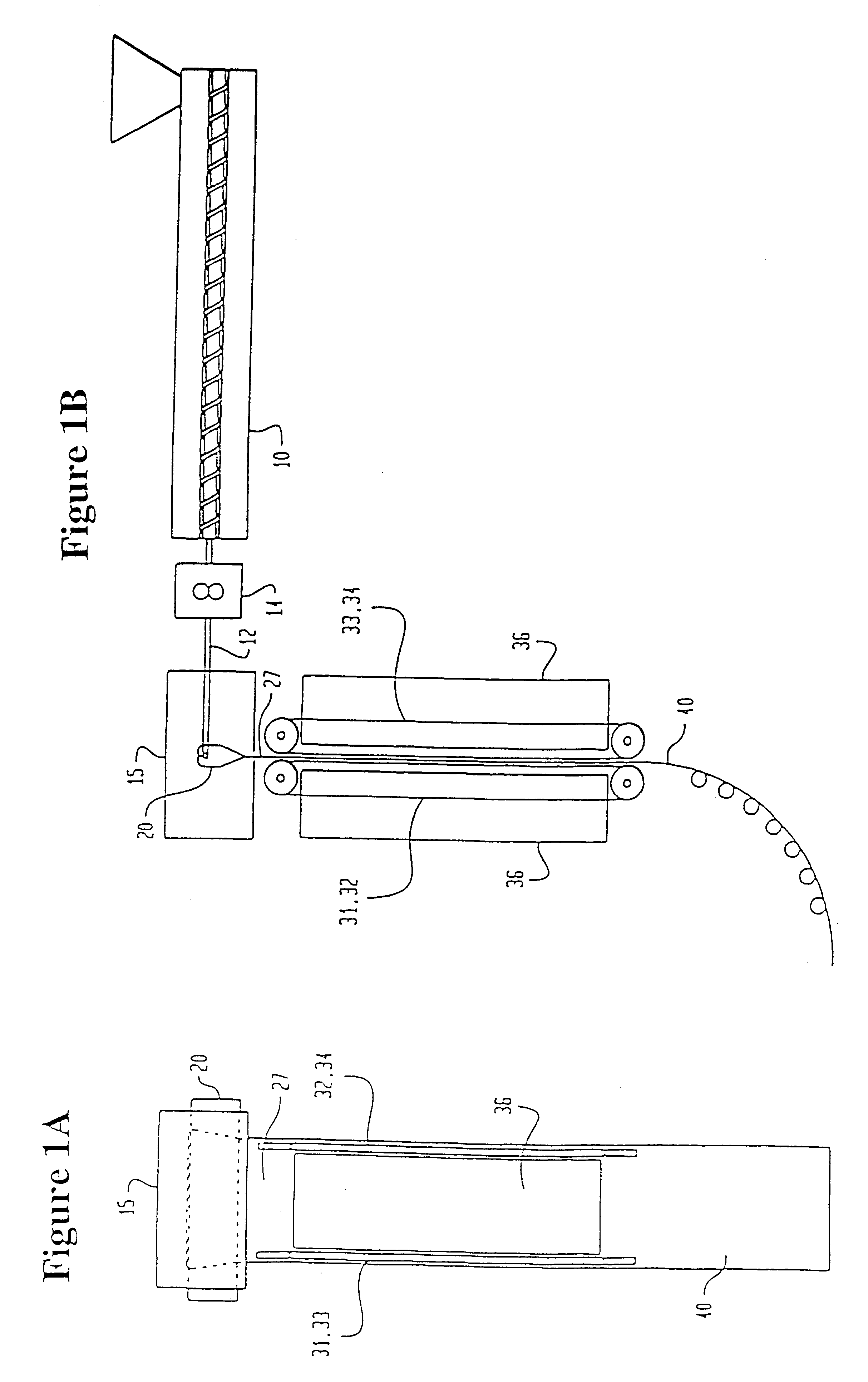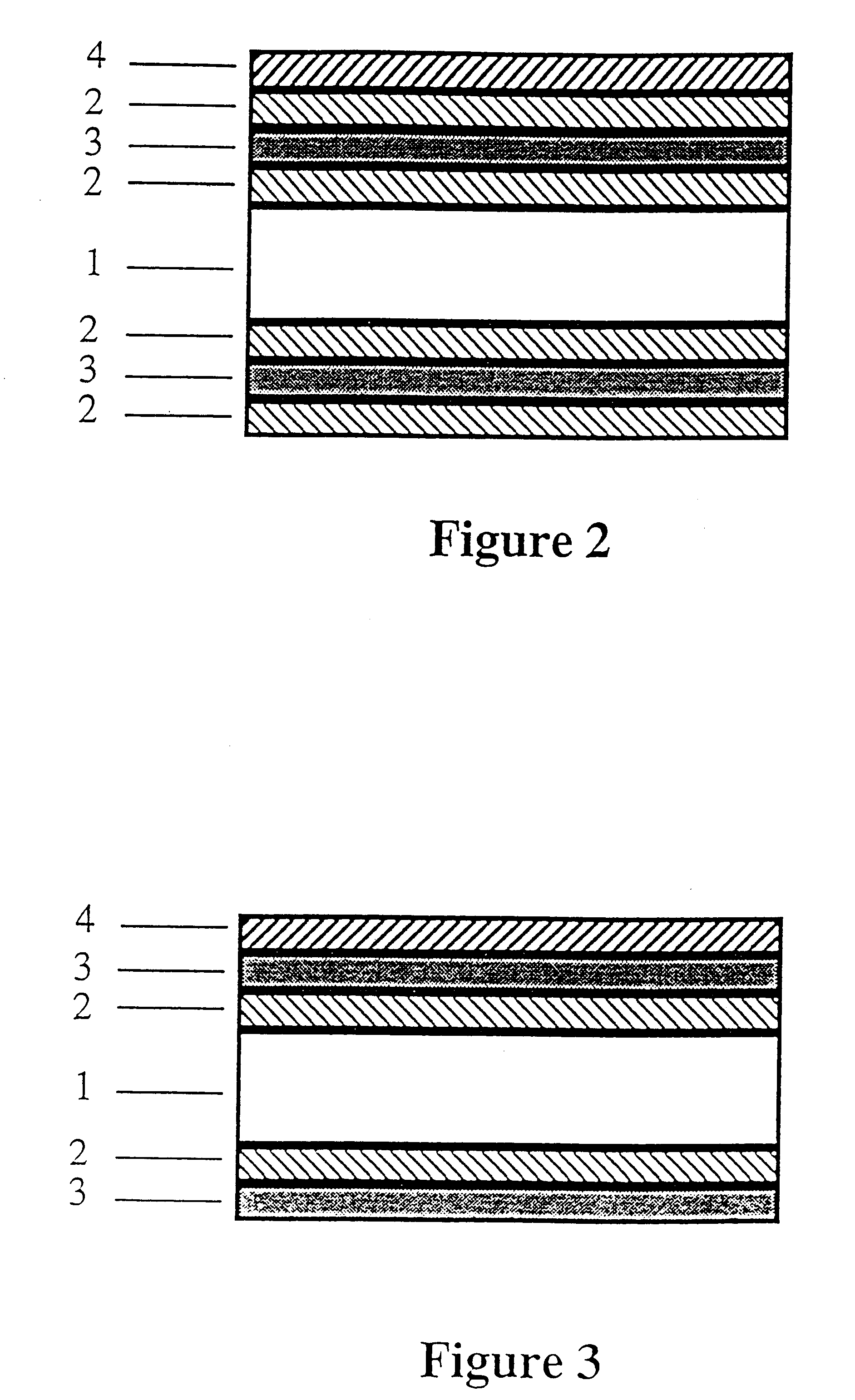Plastic substrates for electronic display applications
a technology of electronic display and substrate, applied in the direction of coatings, instruments, transportation and packaging, etc., can solve the problems of glass and quartz being brittle and subject to breakage, limited in usefulness, and resin having an amber color
- Summary
- Abstract
- Description
- Claims
- Application Information
AI Technical Summary
Benefits of technology
Problems solved by technology
Method used
Image
Examples
example 2
Preparation of High Quality Polyglutarimide Substrate
Polyglutarimide resin (Mw=97,500; Tg of about 180.degree. C.) was starve-fed into a 2 inch (5 cm) diameter single screw vented two-stage extruder having a 30:1 L:D ratio at a rate of 2.5 g / s using a gravimetric feeder. The extruder barrel had a temperature profile from 246.degree. C. at the feed end to 329.degree. C. at the discharge end. The resin was devolatilized using a devolatilization vent operating at 720-750 mm Hg. The screw was rotated at 30 rpm. A gear-type melt pump was used to pump the molten resin through a screen pack filter to 65 cm long overflow die with a 1.588 cm diameter internal conduit and a 40 cm long slot tapering from 0.965 to 1.067 mm. The melt pump temperature was 329.degree. C. The melt pump suction pressure wag approximately 4100 kPa. The melt pump discharge pressure was approximately 1650 kPa. The die was heated using a hot oil system (oil temperature=343.degree. C.) via internal holes in the die, and ...
example 3
Preparation of Substrate Consisting of Polyglutarimide Sheet and Crosslinked Coating Layer
The imidized acrylic plastic of Example 1A (Tg of 155.degree. C.; refractive index of 1.54) was molded into a 0.8 mm thick, 10 cm.times.10 cm sheet by compression molding at 240.degree. C. between polished chrome plates using a 0.8 mm spacer. The total white light transmission was 92%. The optical retardance of the sheet was <5 nm.
The plastic sheet was cleaned with isopropyl alcohol and dip coated with a solution formed from the reaction product of a multifunctional acrylate and an amino-organofunctional silane, and containing dispersed silica (Product XF-1142, SDC Coatings Inc; Anaheim, Calif.). The coating viscosity was approximately 10 centipoise. The withdrawal rate from the coating solution was 10 cm per min. The coating was cured by exposure to broad wavelength UV radiation by applying an energy density 250-360 milliJoules per square centimeter (mJ / cm.sup.2). The resulting dry coating thi...
example 4
Preparation of Polyglutarimide Substrate with Crosslinked Coatings and Barrier Coatings
A polyglutarimide plastic sheet of Example 1A was molded, coated, and cured in accordance with the procedures of Example 3. As in Example 3, the coating solution was formed from the reaction product of a multifunctional acrylate and an amino-organofunctional silane, and containing dispersed silica (Product XF-1146, SDC Coatings Inc; Anaheim, Calif.). A silicon oxynitride film was then deposited on both sides of the sheet by an ion beam sputtering process, according to the following procedure.
The plastic sheet surface was treated in an argon / oxygen plasma for about 30 min. An ion beam sputtered a silicon metal target in a pre-mixed atmosphere composed of argon (75% of gas pressure), oxygen (22%) and nitrogen (3%). The background pressure was 5.times.10.sup.-5 torr. The total gas pressure was approximately 7.times.10.sup.-4 torr. The film deposition rate was approximately 0.5 .ANG. / second. The thick...
PUM
| Property | Measurement | Unit |
|---|---|---|
| Length | aaaaa | aaaaa |
| Thickness | aaaaa | aaaaa |
| Angle | aaaaa | aaaaa |
Abstract
Description
Claims
Application Information
 Login to View More
Login to View More - R&D
- Intellectual Property
- Life Sciences
- Materials
- Tech Scout
- Unparalleled Data Quality
- Higher Quality Content
- 60% Fewer Hallucinations
Browse by: Latest US Patents, China's latest patents, Technical Efficacy Thesaurus, Application Domain, Technology Topic, Popular Technical Reports.
© 2025 PatSnap. All rights reserved.Legal|Privacy policy|Modern Slavery Act Transparency Statement|Sitemap|About US| Contact US: help@patsnap.com


